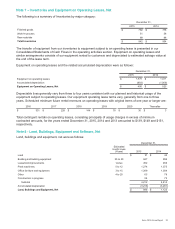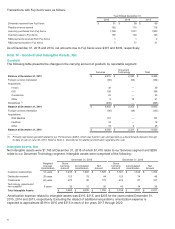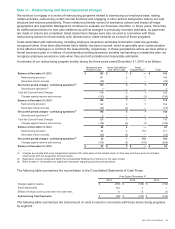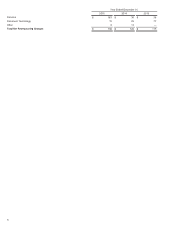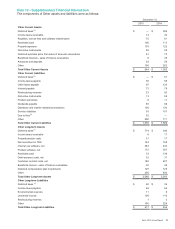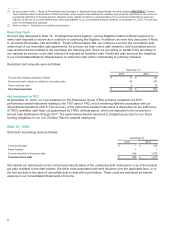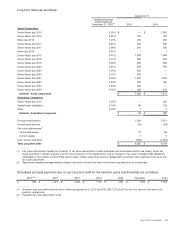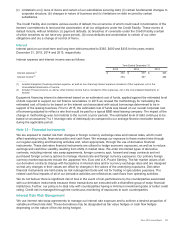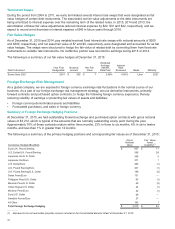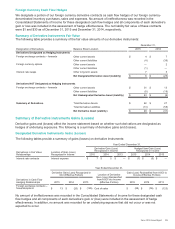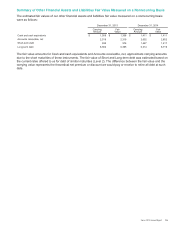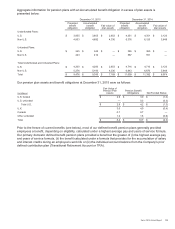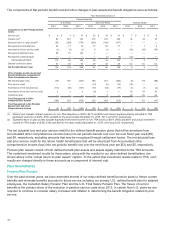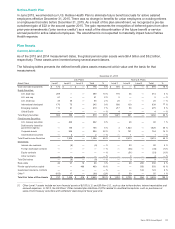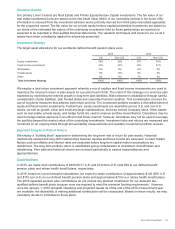Xerox 2015 Annual Report Download - page 119
Download and view the complete annual report
Please find page 119 of the 2015 Xerox annual report below. You can navigate through the pages in the report by either clicking on the pages listed below, or by using the keyword search tool below to find specific information within the annual report.
(c) Limitations on (i) liens of Xerox and certain of our subsidiaries securing debt, (ii) certain fundamental changes to
corporate structure, (iii) changes in nature of business and (iv) limitations on debt incurred by certain
subsidiaries.
The Credit Facility also contains various events of default, the occurrence of which could result in termination of the
lenders' commitments to lend and the acceleration of all our obligations under the Credit Facility. These events of
default include, without limitation: (i) payment defaults, (ii) breaches of covenants under the Credit Facility (certain
of which breaches do not have any grace period), (iii) cross-defaults and acceleration to certain of our other
obligations and (iv) a change of control of Xerox.
Interest
Interest paid on our short-term and long-term debt amounted to $365, $400 and $435 for the years ended
December 31, 2015, 2014 and 2013, respectively.
Interest expense and interest income was as follows:
Year Ended December 31,
2015 2014 2013
Interest expense(1) $353 $377 $403
Interest income(2) 354 397 494
___________
(1) Includes Equipment financing interest expense, as well as non-financing interest expense included in Other expenses, net in the
Consolidated Statements of Income.
(2) Includes Finance income, as well as other interest income that is included in Other expenses, net in the Consolidated Statements of
Income.
Equipment financing interest is determined based on an estimated cost of funds, applied against the estimated level
of debt required to support our net finance receivables. In 2015 we revised the methodology for calculating the
estimated cost of funds to be based on the interest cost associated with actual borrowings determined to be in
support of the leasing business. Prior to 2015, the estimated cost of funds was based on our overall corporate cost
of borrowing adjusted to reflect a rate that would be paid by a typical BBB rated leasing company. The impact of the
change in methodology was not material to the current or prior periods. The estimated level of debt continues to be
based on an assumed 7 to 1 leverage ratio of debt/equity as compared to our average finance receivable balance
during the applicable period.
Note 14 – Financial Instruments
We are exposed to market risk from changes in foreign currency exchange rates and interest rates, which could
affect operating results, financial position and cash flows. We manage our exposure to these market risks through
our regular operating and financing activities and, when appropriate, through the use of derivative financial
instruments. These derivative financial instruments are utilized to hedge economic exposures, as well as to reduce
earnings and cash flow volatility resulting from shifts in market rates. We enter into limited types of derivative
contracts, including interest rate swap agreements, foreign currency spot, forward and swap contracts and net
purchased foreign currency options to manage interest rate and foreign currency exposures. Our primary foreign
currency market exposures include the Japanese Yen, Euro and U.K. Pound Sterling. The fair market values of all
our derivative contracts change with fluctuations in interest rates and/or currency exchange rates and are designed
so that any changes in their values are offset by changes in the values of the underlying exposures. Derivative
financial instruments are held solely as risk management tools and not for trading or speculative purposes. The
related cash flow impacts of all of our derivative activities are reflected as cash flows from operating activities.
We do not believe there is significant risk of loss in the event of non-performance by the counterparties associated
with our derivative instruments because these transactions are executed with a diversified group of major financial
institutions. Further, our policy is to deal only with counterparties having a minimum investment grade or better credit
rating. Credit risk is managed through the continuous monitoring of exposures to such counterparties.
Interest Rate Risk Management
We use interest rate swap agreements to manage our interest rate exposure and to achieve a desired proportion of
variable and fixed rate debt. These derivatives may be designated as fair value hedges or cash flow hedges
depending on the nature of the risk being hedged.
Xerox 2015 Annual Report 102


